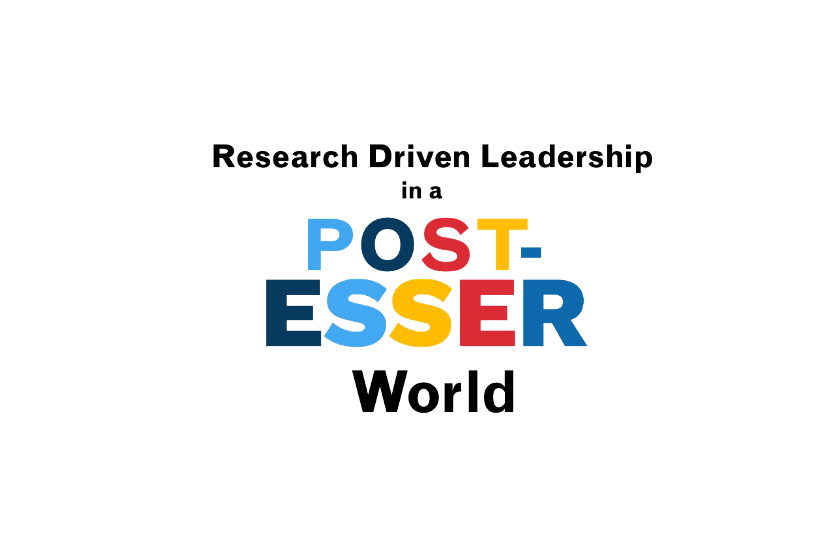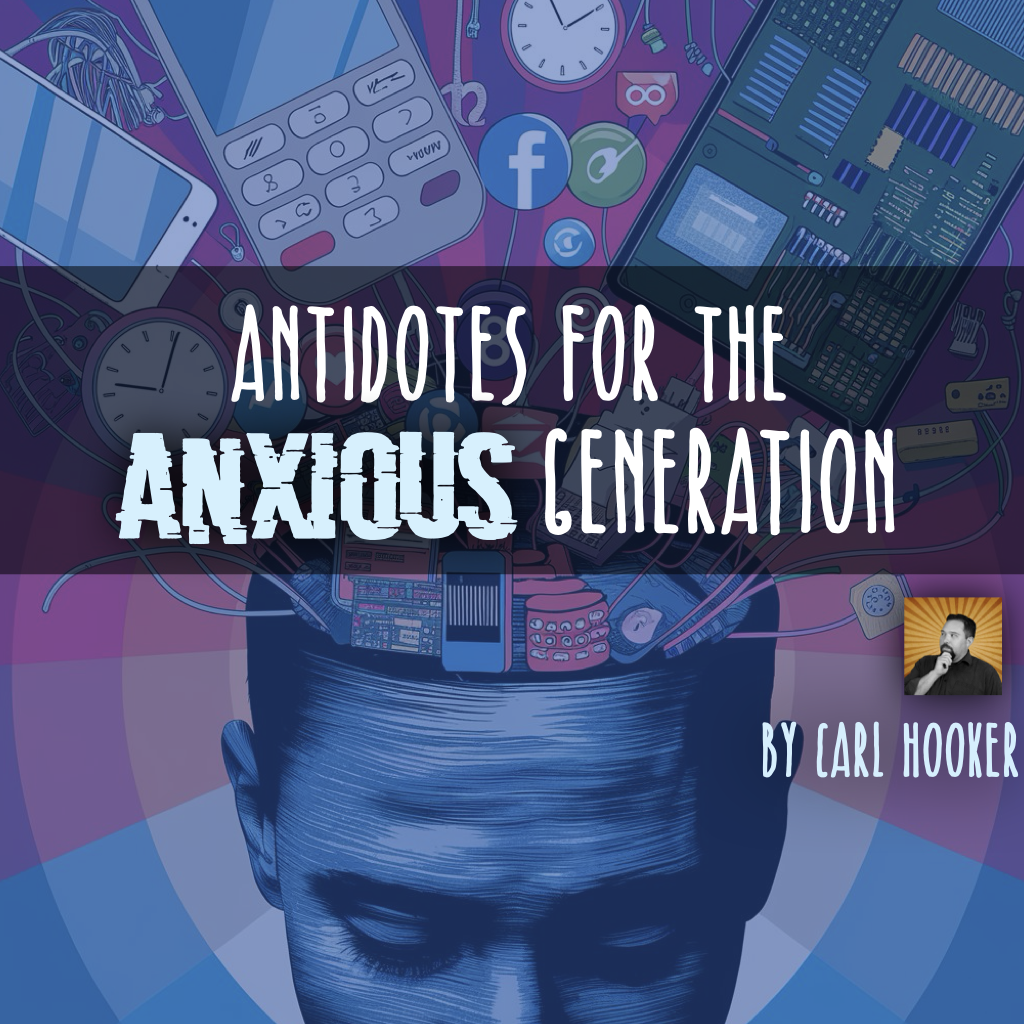Research Driven Leadership in a Post-ESSER World

As we enter this post-ESSER period, there’s a Peter Drucker quote that becomes particularly relevant for all K-12 leaders. “Management,” he wrote, “is doing things right; leadership is doing the right things.” I don’t often hear Drucker being quoted when it comes to K-12 district leadership, but he should be.
School and district leaders are constantly navigating multiple priorities and interests. The distinction between “doing things right” and “doing the right things” is crucial for leaders at every level, from classroom teachers to superintendents. It’s not enough to “manage” resources—leaders need to understand what’s important, when to focus on it, and how to balance competing priorities between student outcomes, financial resources, and community expectations. This is where conducting and participating in quality research programs becomes an essential leadership tool.
For district leaders, particularly chief business officers and superintendents, research isn’t just a “nice-to-have.” Securing funding for schools through Title I and competitive opportunities like School Improvement Grants (SIG) requires more than just good ideas. These funds are tied to evidence-based strategies, meaning that funded programs must demonstrate they improve student outcomes.

“Any leader, when making decisions about funding or innovation, regardless of the source of funding, it’s essential to act and implement with fidelity. Otherwise you’re just spending money, not leading and not moving forward.”
Bill Bass, Innovation Director at Parkway School District
Under the Every Student Succeeds Act (ESSA), schools receiving Title I funds are mandated to use interventions that have a strong evidence base Brookings. This requirement ensures that taxpayer dollars are spent on programs that show measurable impact and align with best instructional practices. Without research, the ability to secure and maintain funding for new programs can evaporate leaving schools unable to meet the needs of their students. Districts applying for grants must also show detailed plans for evaluating the success of their initiatives, which underscores the critical role ongoing research plays in fiscal sustainability.
Bill Bass, Innovation Director at Parkway School District in Missouri says, “Any leader, when making decisions about funding or innovation, regardless of the source of funding, it’s essential to act and implement with fidelity. Otherwise you’re just spending money, not leading and not moving forward.”
The Benefits of Conducting and Participating in Research
Conducting and participating in quality research offers three immediate benefits:
- Ensures efficacy and ROI for your assumptions and investments.
- Identifies the unique needs of your learning community, including both educators and students.
- Demonstrates leadership’s commitment to responsiveness and informed decision-making.
The Role of Reflection in Research and Funding
This connection between research and funding highlights the importance of ongoing evaluation. By collecting data and assessing the effectiveness of new programs, school leaders can make informed financial decisions, whether the programs are grant-funded or not. If a program is successful, districts can reinvest to continue the initiative or even expand its reach. If unsuccessful, funds can be redirected to better training or more promising solutions to achieve the identified goals. This cycle of research, reflection, and reinvestment is essential for balancing innovation with financial accountability.
It’s also a shared responsibility. A school’s first job is serving its students, and the process of reflection takes time and careful management. This creates an interdependent relationship between schools, academics, and solution providers. Schools contribute real-world needs, academics provide authoritative frameworks for analysis, and solution providers respond with products based on these validated market needs.
Solution providers should view themselves as vested partners in this process. Given the pressures that districts face, offerings should either include or integrate feedback loops that make it easier for schools to assess the impact they’re having with the tools they adopt.
For instance, Promethean, a manufacturer of interactive whiteboards, has a dedicated research department that regularly engages with district partners and academic institutions to conduct and provide rigorous analysis of the impact they are supporting in the classroom.
“Partnering with universities and research organizations like Teachers College, Columbia University brings rigor to the process that ensures we gain real insights from the data—insights that we can share directly with the districts themselves.”
Anna Hughes, Director of User Research at Promethean

Anna Hughes, Director of User Research at Promethean, explains the value of these partnerships, “Our focus is always on listening to the teachers, administrators, and technology staff involved in teaching and learning around the world. We’re constantly seeking evidence of impact, whether to improve our existing solutions or develop new ones. The best moments come when we recognize a challenge and see user feedback directly shaping product development.”
“We partner with universities and research organizations like Teachers College, Columbia University whenever possible. The rigor and methods they bring to the process ensure that we’re gaining real insights from the data—insights that we can share directly with the districts themselves.”
Using Research to Redirect Resources
Sometimes vendors may feel concerned about scrutiny, but an important part of any district/vendor partnership is the trust that both parties want each other to be successful. Making it easy for school leaders to evaluate success and/or identify gaps creates an opportunity for redirection—for instance, investing in additional professional development.
The history of interactive whiteboards offers a useful example. When IWBs entered the market more than 15 years ago, they were met with a rush of enthusiasm and quick adoption. Community support was overwhelmingly positive, and purchases soared. But soon, practical issues—installation, professional development, and maintenance—began to temper that excitement. As a result, classroom adoption declined, with many districts unsure whether the investment had paid off.
However, a more recent meta-analysis of 23 studies found that IWBs, when combined with well-structured, independent learning approaches, can have a positive impact on cognitive outcomes SpringerOpen.

“When you partner with an organization like the NSF, the Office of Naval Research, or MIT Critical Data you’re becoming part of an amazingly rigorous feedback loop. ”
Dr. Luk Hendrik, CEO of Aecern.org
Research, though it takes time, is essential for validating the effectiveness of new tools and strategies. Without it, school leaders are left guessing which innovations are worth the investment, risking missed opportunities or wasted resources.
Some new solutions do evolve from research-driven grants. In fact, that’s a driving factor behind many grants from organizations like the National Science Foundation and the Office of Naval Research.
“We make it a priority to participate in quality grant opportunities,” Says Dr. Luk Hendrik’s of Scoutlier, a relatively new scaffolding and enrichment platform. “When you partner with an organization like the NSF, the Office of Naval Research, or MIT Critical Data you’re becoming part of an amazingly rigorous feedback loop. By the time your offerings are ready for release they’ve already been through prolonged field tests with educators and have been independently evaluated by some of the national top educational researchers. Yes, it’s a lot more work up front, but everyone ends up benefiting from the process.”
The Hawthorne Effect and Innovation
It’s worth recalling the Hawthorne Effect, a classic example of the value of experimentation and observation. In the 1920s and 1930s, researchers at Western Electric’s Hawthorne Works experimented with changing the brightness of lighting to observe its impact on worker productivity. They found something unexpected: whether the lights were brightened or dimmed, productivity improved. Why? The workers were responding to the attention they received during the study, not the lighting changes themselves Home | American Institutes for Research.
For educational leaders, the key takeaway is that experimentation can lead to positive outcomes even before the results are rigorously studied. Importantly, this isn’t about treating staff or students as “subjects” in experiments. Instead, it’s about involving educators as collaborators in the innovation process. When teachers are supported and involved, they’re more likely to engage with new tools and teaching methods in ways that drive desired outcomes.
Professional Development and Ongoing Support
As seen with the example of interactive whiteboards, it’s critical that educators are equipped to integrate new tools into their teaching practices. While initial professional development is important, research shows that ongoing support is what drives long-term success SpringerOpen.
Schools didn’t struggle with whiteboard adoption because the technology was ineffective, but because teachers needed support to use the boards in ways that improved learning outcomes. Districts that invest not just in initial training but in ongoing professional development see better engagement and outcomes.
Professional learning communities (PLCs) are equally critical. These communities provide spaces where educators can collaborate, share experiences, troubleshoot challenges, and learn from one another. Many companies, like Apple and Microsoft, offer their own communities, but general networks like K12Leaders provide platforms where educators can stay connected with peers, trainers, and presenters long after an initial conference or training session. These networks foster a continuous flow of new ideas and encouragement, helping educators navigate the practical challenges of implementing innovative strategies in the classroom.
In the end, it’s the ongoing learning—both through structured professional development and peer networking—that sustains innovation. Teachers can’t be expected to learn a new tool with a single training event; they need continuous opportunities to adapt, share insights, and evolve their practice.
Bass adds, “Leaders need to “create space” for teachers to be able to try new practices and tools while recognizing that some things will work better than others. Just like with students, teachers learn through experimentation and must have the opportunity to work through challenges and successes. This takes time, energy, and collaboration which are all critical elements of the ongoing support when adopting or implementing new solutions.”
Leading with Research
How do we, as a district, contribute to research on topics we care about? This is an essential question for today’s educational leaders. Beyond using research to guide decisions, district leaders have a responsibility to contribute to the research that shapes the future of education. In an era where technology, tools, and methodologies are evolving rapidly, leaders must ensure their communities’ voices are represented in broader conversations about what works in education.
District leaders who engage in research contribute to the collective knowledge base, not just for their own benefit but for the benefit of students and educators everywhere. Whether it’s partnering with vendors conducting efficacy studies or collaborating with universities, districts have an opportunity to drive the innovations that will shape the next generation of learning tools.
Moreover, participation in research allows districts to tailor solutions to their specific needs, rather than waiting for external solutions to be presented. Leadership in this context means helping to discover what works best within the unique context of a community, ensuring that the tools and strategies developed reflect the diverse realities of today’s schools.
Research, Reflect, Reinvest, or Redirect

“Research and reflection helps us be strategic, not just reactive, with our resources.”
Leo Brehm, Assistant Superintendent for Finance, Business, and Technology at Dighton-Rehoboth School District
Leo Brehm, Assistant Superintendent for Finance, Business, and Technology at Dighton-Rehoboth in Massachusetts says, “Managing a budget requires more than just oversight; it really requires thoughtful reflection and the ability to make informed decisions. By reallocating funds to areas where we know, through research and careful evaluation, they’ll have the biggest impact, we make sure that each dollar is working to support student success. Research and reflection helps us be strategic, not just reactive, with our resources.”
The challenge for today’s educational leaders isn’t about choosing between innovation and a balanced budget- it’s about finding the balance that enables both. By establishing systems for ongoing evaluation, school leaders can reflect on the impact of their investments and make informed decisions about whether to reinvest in successful programs or redirect resources toward more effective solutions.
As Drucker’s wisdom suggests, leadership is about “doing the right things.” That means ensuring that every decision, whether grounded in research or driven by experimentation, aligns with the ultimate goal of improving student outcomes. With a careful balance of strategic risk-taking, data-driven evaluation, and fiscal responsibility, K-12 leaders can ensure their districts remain innovative, adaptable, and prepared for whatever the post-ESSER future holds.
Calls to Action
- Join a research study like Teachers College, Columbia University (IRB 24-127).
- Get involved with a research oriented PLC like Efficacy & Research in K12 to learn from your peers.
- Stay up-to-date on grants funded by research oriented organizations like the National Science Foundation and Naval Post Graduate School to understand what’s coming down the road.
Key Takeaways
- Fiscally responsible leadership requires balance : Effective leadership in K-12 education is about making informed decisions that balance student outcomes, financial resources, and community expectations.
- Research is essential for securing funding : Districts need evidence-based strategies to secure Title funding and other competitive grants like School Improvement Grants (SIG), ensuring that funded programs lead to measurable improvements in student outcomes.
- Ongoing reflection drives financial sustainability : School leaders must continuously evaluate the success of programs and make data-driven decisions to reinvest in successful initiatives or redirect funds to more promising solutions.
- Collaboration is key : Schools, academics, and solution providers must work together to ensure that research reflects real-world needs and results in effective solutions.
- Professional development and peer support sustain innovation : Initial training is important, but ongoing professional development and learning communities (PLCs) are critical for ensuring that educators continue to improve their use of new tools and strategies over time.
- Experimentation with purpose : The Hawthorne Effect demonstrates that experimentation can lead to positive outcomes, especially when staff are involved as collaborators in the innovation process.
- Contributing to research strengthens leadership : By engaging in primary research, districts not only benefit their own communities but also contribute to the collective knowledge base, influencing broader educational trends.
- Long-term success requires flexibility : Leaders must be willing to reflect, reinvest, or redirect resources based on research and ongoing evaluation to ensure sustained innovation and financial responsibility.
Essential Leadership Questions:
- How are we ensuring that our decisions about funding and innovation are based on evidence and research?
- Are we participating in or contributing to research that will directly benefit our district and shape the future of education?
- How can we better collaborate with academics and solution providers to align our needs with research-backed strategies?
- Are we providing enough ongoing professional development and support to ensure that our educators can effectively use the tools and strategies we implement?
- How do we maintain the balance between fiscal responsibility and long-term financial sustainability?
- What feedback loops are in place to help us assess whether the tools and solutions we adopt are having the desired impact?
- How can we encourage a “growth mindset” and culture of innovation, where staff are active collaborators in suggesting, testing and refining new ideas?
- Are we flexible enough in our approach to reinvest in successful initiatives or redirect resources when programs aren’t delivering expected results?
- How do we create opportunities for educators to learn from each other and take advantage of opportunities to experiment?







Responses